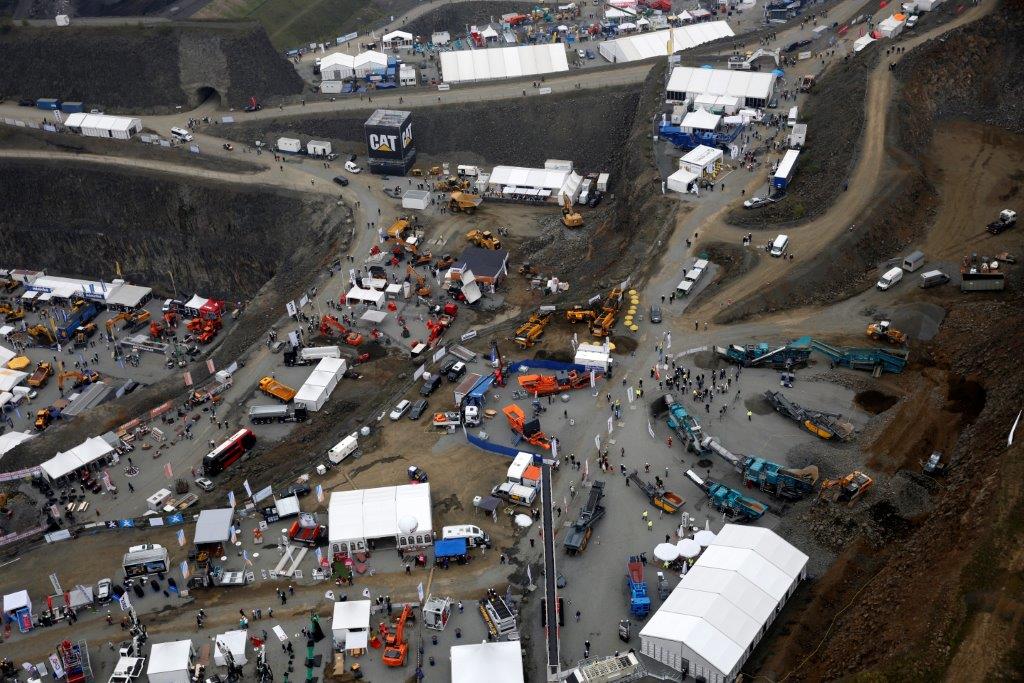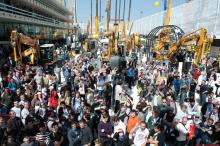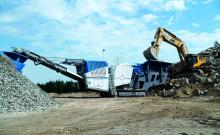
Germany’s demand for aggregates is set to grow, partly due to an increasingly strong residential construction sector. Patrick Smith reports.
Germany’s annual demand for gravel, sand, quartz sand and natural stone products for the construction and many other industries is estimated at some 500 million tonnes/year. Indeed, in Germany, some 1,600 companies, with around 3,000 plants and 25,000 employees, are involved in the quarrying industry. Reputedly the largest producer of aggregates in Europe, the country also has Europe’s largest economy and its largest construction market.
According to the German aggregates association,
It says this will continue only if the possibilities for gaining profits are not effectively excluded by settlements and transport rroutes or made considerably more difficult by protected areas.
“Access to our important domestic raw materials must, therefore, have the same rank as other public concerns in consideration of weighing decisions. This is what MIRO is all about,” says the organisation,
“Precautionary safeguarding of raw materials is ultimately a basic task of services of general interest. The overall social mission is to recognise this and to take long-term safeguards, since the annual demand will remain the same or even moderate growth by 2030 on average.”
MIRO points out that the extent of the annual extraction of gravel, sand, quartz sand and natural stone depends on the respective demand, but surveys conducted by the Federal Institute for Geosciences and Natural Resources in 2011, show that the extraction of gravel, sand and solid rock in Germany accounted for some 12.9km of space requirements, equivalent to 0.0036% of the total area of Germany.
The industry was bolstered recently by news that associations of the German construction industry sector, a major pillar of the country’s economy, are expecting sales to increase by around 5% in 2017.
In a statement, leaders of the Deutsche Bauindustrie and Deutsche Baugewerbe (construction industry associations), say: “The German construction industry is heading into 2017 with great confidence. As seen last year, the driver will be residential construction with growth of 7%.”
The number of employees in the sector, which accounts for 3.3% of German GDP, is expected to increase by around 10,000 in 2017.
Indeed, late last year two of Europe’s biggest mega-projects involving Germany signed agreements on cooperation.
The Fehmarnbelt Fixed Link between Denmark and Germany and the Brenner Base Tunnel (BBT) between Austria and Italy are both record-breaking European mega-projects that will play a vital role in the future European transport network.
Representatives from the project companies, and members of the two regional development organisations, STRING and Brenner Corridor Platform (BCP), signed the agreements.
“Large infrastructure projects create game-changing developments in surrounding communities. Implementing the infrastructure for the benefit of those communities requires dialogue, planning and political will. With regards to the Brenner and Fehmarnbelt projects, the new infrastructure will benefit their surrounding communities in terms of economic growth, jobs and sustainable development. We can learn from each other, and together influence political decision-making beyond our regional and national interests”, says Steen Bach Nielsen, chairman of STRING, a political cross-border partnership between Hamburg and Schleswig-Holstein in Germany; the Capital Region of Denmark; Region Zealand, and the City of Copenhagen in Denmark, and Region Skåne in Sweden.
The Fehmarnbelt Fixed Link is a planned 18km immersed tunnel between Rødbyhavn in Denmark and Puttgarden in Germany, making it the longest immersed tunnel in the world, while the Brenner Base Tunnel is a 64km dual-track railway tunnel through the Brenner Pass. The BBT will be the longest underground railway connection in the world. It will run from Innsbruck in Austria to Fortezza in Italy, replacing the current railway.
The Brenner Corridor Platform (BCP) was set up by the European Coordinator Karel van Miert, in 2007 to guarantee an integrated approach for the Brenner Corridor between Munich, Germany, and Verona in Italy.
This, and other projects in the pipeline, is good news for those involved in the industry, and the equipment manufacturers and quarry operators in Germany that supply machines and products.
Meanwhile,
Thus, German companies performed slightly better than the world market. In 2017, they expect another increase in sales by 3%.
The VDMA report says that as in the year before, in 2016 companies benefited from their strong position in the European and especially in the German market.
After an already strong 2015, the domestic market grew by another 20% and achieved a level almost as high as in the record year of 2007 with sales of the German industry on the domestic market amounting to €3 billion.
“In view of this high level, a further growth seems hardly possible, even if our customers continue to make good business in Germany,” says Johann Sailer, chairman of the Construction Equipment and Building Material Machinery Industry Association of the VDMA.
Compared to the previous year, the European market rose by 8%. Next to Germany, France was the second growth driver.
“We will only keep growing in the future if we further strive for international solutions and cooperations. In a highly specialised sector like ours, where special machines are not available in every region of the world, open markets are highly essential. We all depend on free trade and good economic sense. This applies for Europe and the United States alike”, says Sailer.
Manufacturers will also be boosted by the recently-published
Overall, the market is at its highest level in five years, but is still considerably below the pre-crisis record levels.
The report says that as in the previous year, the European market outperformed most regions of the world, and ranked third in growth numbers, behind only China and India.
Volume-wise, the strongest sales increases were recorded in France, Germany, and Italy.
“The German market in particular, and Northern and Western Europe in general, are close to their historical record levels,” says Sebastian Popp, economic expert at CECE.
In its Outlook 2017, the CECE Business Barometer index had hit a temporary low following the UK’s Brexit vote in June, 2016, but has been on a growth path since then which resulted in the highest index value in almost six years in February 2017.
For the European market, the manufacturers surveyed in the CECE Barometer expect a generally positive scenario, except for the Turkish market. Hopes particularly concentrate on Germany, Scandinavia and France.
Another company,
The Mobicone MCO 11i features the company’s latest control technology for efficient operations. The Mobicone Pro is a redesign of the previous generation machine and now benefits from a new feeder design. It can deliver a throughput of up to 500tonnes/hour in suitable conditions, with the feed rate optimised due to the sophisticated control system for the feeder.
As with CONEXPO, many of the companies involved in the construction and aggregates equipment industries will have displays at the upcoming
Mitteldeutsche Hartstein-Industrie (MHI) is again making suitable areas in Europe’s largest basalt quarry in Homberg/Nieder-Ofleiden, Germany, available for the exhibition, which will also be held at the venue in 2020.
In 2014, 254 exhibitors opened their stands for successful discussions with 48,130 visitors, 93% of which came out of purely professional interest to the trade fair, say the organisers,
At present, nearly all the market leaders in the fields of construction equipment and treatment and preparation technology will be represented at steinexpo 2017, and many have booked even more extensive areas than in the past.
Dr Friedhelm Rese, trade fair director, says that by the end of January about 200 exhibitors representing a total of 340 brands had already confirmed their participation.









